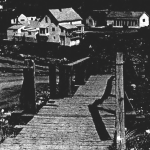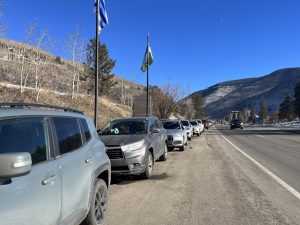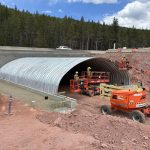Vail Pass closed due to avalanche
Slides, natural and triggered, pummeled the I-70 corridor on Thursday

Tali Landsman | Special to the Daily
UPDATE (07:15 p.m.): Vail Pass is now open in both directions. Please drive safely.
UPDATE (3:35 p.m.): No one has ever seen anything like the week we’ve had in the Colorado high country.
“We spend a lot of time talking to observers, people retired from CDOT, from the CAIC and others. Nobody who is alive has ever seen anything like this,” Ethan Greene, Colorado Avalanche Information Center director, said Thursday afternoon during a conference call.
Among the things no one has seen before: Ironically, a tow truck was caught in a slide in a pot called “The Narrows” on Vail Pass and had to be pulled out by another tow truck, CDOT reported. No one was injured.
Greene said the avalanche center can’t count all the avalanches this year — and especially the past week — because with the weather workers cannot see everything.
There are several naturally-occurring avalanches, while others stem from mitigation activities by Colorado Department of Transportation crews, Greene said. For now, it can be difficult to discern the difference.
Vail Pass shut down
Mitigation crews hiked to the top of Vail Pass on Thursday to drop charges and blast snow off the mountainside, said CDOT’s Amy Ford. Besides Vail Pass, crews are also working near Copper Mountain, a stretch east of Eisenhower Tunnel, Loveland Pass, Berthoud Pass.
Another weather system is headed our way.
Glenwood Canyon could become an issue as more weather systems move through the area beginning Friday and running through early next week, Ford said.
“Things won’t change much,” Greene said. “Avalanche crews will keep working hard over the next few days.”
CDOT crews reopened Highway 24 between Minturn and Leadville mid-afternoon Thursday. That got commercial vehicles moving around Highway 24 through Leadville and around Highway 91 to Copper Mountain, according to Ford.
Ford said it would probably be late afternoon Thursday before I-70 would reopen from Vail to Denver.
While crews keep working around the clock to clear highways of avalanche aftermath, Ford urged motorists not to make matters worse.
“It’s still tough winter driving in some of these areas,” she said.
20 inches at least
Thursday’s round of avalanches started when 20 inches of new snow fell Wednesday night through Thursday and kicked off avalanches that closed both Interstate 70 and Highway 24.
The first was a natural slide on Vail Pass around 1:30 a.m. Thursday in The Narrows. As much as six feet of snow made it to the center of I-70’s westbound lane, CDOT reported.
Crews performing avalanche mitigation work kicked off the second slide near Eisenhower Tunnel mid-morning Thursday.
Between the two slides, I-70 was closed for several hours Thursday, stranding motorists, especially when CDOT was forced to close Highway 24 between Minturn and Leadville around 10 a.m. Thursday.
“This event started at 1:30 this morning and it looks like we’re in for another long day,” CDOT’s Tracy Truelove said Thursday morning. “Avalanches are not the only things we’re worried about. Spinouts and other problems are also a safety concern.”
All the snowplows CDOT has are out there. Still, the snowpack is “epic,” and historically, some of these slide paths have not cut loose since the 1980s, Truelove said.
Extreme avalanche danger
A backcountry recreationalist was caught Thursday in an avalanche on Jones Pass in Clear Creek County, Greene said. Search and rescue crews headed out immediately; no information was available on the individual’s condition, as of Thursday.
The Colorado Avalanche Information Center cranked the rating up to “extreme” on Thursday for the Aspen, Gunnison, Sawatch Range, Vail and Summit County zones. Extreme is as high as it gets.
The center also issued an avalanche warning for most of the mountainous areas of the state, citing “exceptional avalanche conditions.”
“Every inch of avalanche terrain is extremely dangerous today,” the center posted on its website Thursday morning. “Avalanches are running to valley floors and some are exceeding historic run outs.”
The center said even trails that typically seem safe from avalanches should be avoided.
“Typical trails and routes may not account for the potential size and consequence of avalanches today,” the center said.
CO 91 is not a viable alternate route any longer due to the closure at Exit 195 (Copper Mountain). CO 91 is currently closed.
US 24 is still open but you will not be able to access CO 91.
— Colorado Department of Transportation (CDOT) (@ColoradoDOT) March 7, 2019
The story will be updated.











